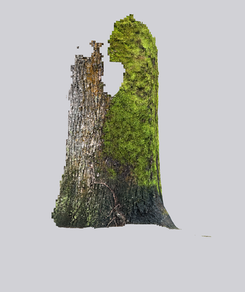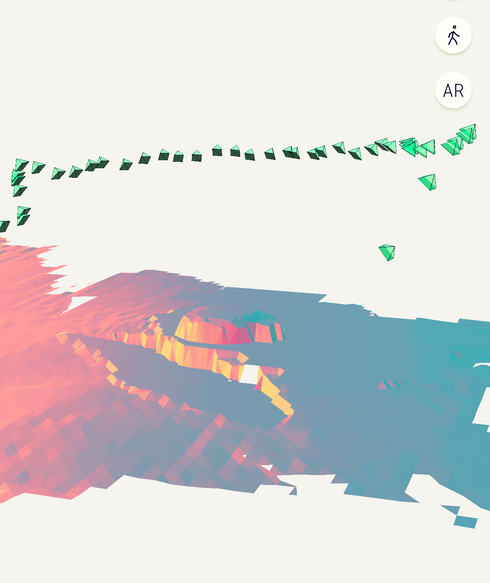
Explorations with 3D Scanning
An attempt at capturing the growing moss and everchanging trees as 3D scans and prints
As a Research Assistant at Material matters Lab, I was tasked with exploring accessible, mobile-based 3D scanning technologies for applications in e-commerce with Shopify Inc. Inspired by the results we achieved, I wanted to test this technology's potential as an artistic expression with no expectation of capturing an 'accurate' technical model. I thought it would be interesting to capture organic shapes- trees, leaves and branches, that are usually difficult to model using CAD. I liked the idea of capturing (and even 3D printing!) models of things that will change over time.

I started with scanning the plant we have in Material Matters with the Creaform's Go!Scan 3D scanner.
It took a while to scan around all the surfaces, under and over the leaves and make sure there were no uncaptured 'shadow' regions. The scanner struggled with the leaves because they are relatively 2 dimensional.
Photogrammetry
iPad Structure Sensor
Next, I went outside with the iPad Structure sensor and the iPhone 13 to capture some trees. The cloudy sky provided nice and even diffused light. Tree barks have rough textures and organic geometry that would make for good landmarks in photogrammetry as well as LiDAR scans. It was also fun to see people’s reactions to me doing the awkward “scanning dance” around random trees in the park!
I was surprised by how well it captured the texture and geometry at scale. Although, it preferred to have a flat ground plane to start the scan on.

3D printing a Tree


iPhone 13 Pro Max
Polycam + Scaniverse with LiDAR
Polycam + LiDAR was able to capture incredibly high-quality details with the texture of the trees. The scans did not take long to capture or process. However, all scanners still struggled with dense grass or leaves casting shadows on each other. The more isolated the scan subject is, the better.












































